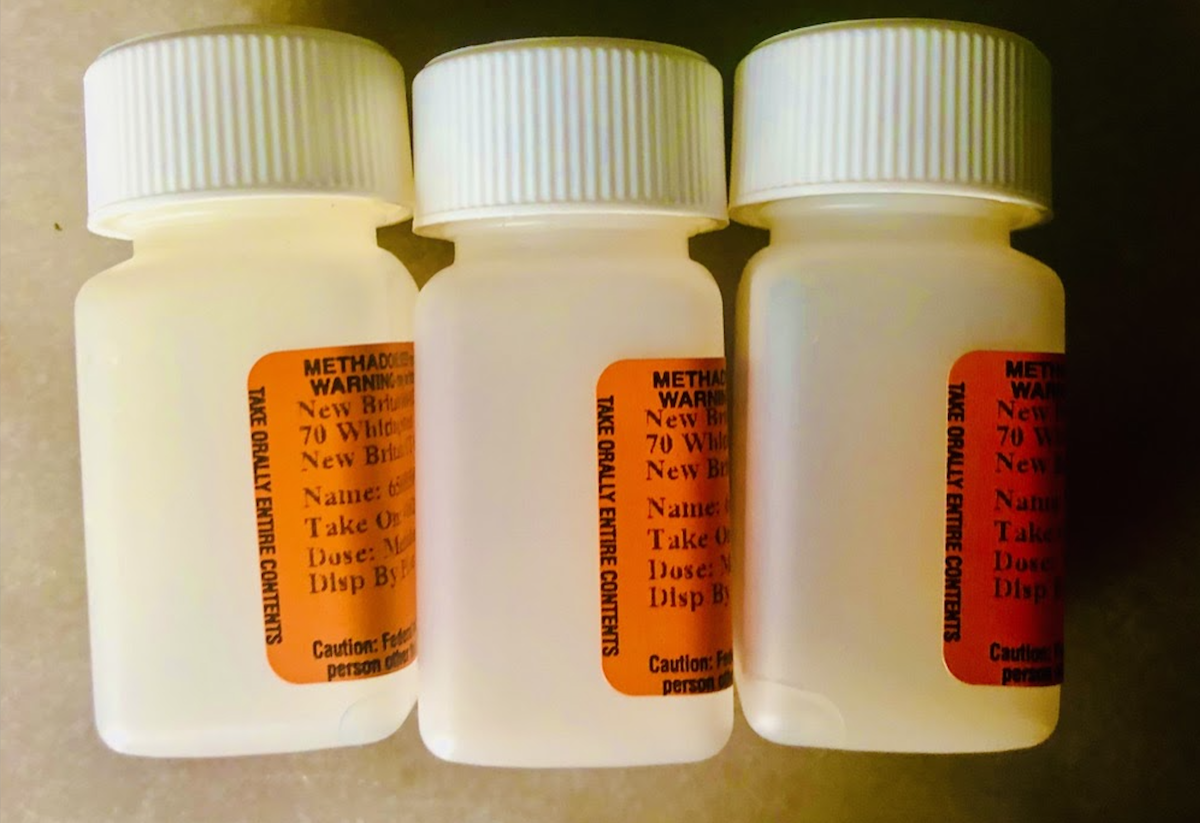

COVID-19 made us rethink how and why we were doing all kinds of things simply out of routine. Why do office workers have to commute to a desk to make a phone call? Why do folks need to go in person to therapy or to benefit appointments, if they can be done virtually? Why are methadone patients still largely attending clinics in person, up to six days a week, to receive their medication?
Methadone is recognized by the World Health Organization as an “essential medicine.” Its ability to save and improve lives has been proven over many decades. Methadone clinics, also known as opioid treatment programs, first opened in the United States after the Food and Drug Administration approved the drug as an addiction treatment back in 1972. But they have always been structured around daily visits.
It took COVID-19 to allow me and my fellow patients a bit of breathing room from this rigid schedule. At the height of the pandemic, the Substance Abuse and Mental Health Services Administration (SAMHSA) and the Drug Enforcement Administration (DEA) issued temporary guidelines to allow patients to take methadone doses home.
Finally, my prescribed medication was being treated like a prescribed medication.
I was then able to obtain 28 days of take-home medication. Finally, my prescribed medication was being treated like a prescribed medication. It was a relief from the daily trek to the clinic, a break from worries that my job would be impacted and of my privacy being breached. It also offered the freedom to travel for the first time without the panic of getting clinic approval.
Previously I had to supply personal travel documents to my counselor two weeks in advance to get additional methadone. I will never forget one scarring travel experience to an out-of-state wedding. My request for two measly days of medication to take with me was denied because of an earlier failed drug test.
As a Plan B, I brought street drugs in place of the methadone, which did not work out well for me. I became extremely ill, then ended up taking a desperate side trip to an area of Baltimore where the internet agreed I could buy drugs.
I felt betrayed by my “nice” counselor—and by the system. Punitive measures for failing a drug test seem idiotic at a clinic specifically intended for people with opioid use disorder.
My clinic took away my 28-day supply, and I now have to go three times a week.
Last November, the temporary SAMHSA/DEA guidelines were extended for a further year. But these guidelines don’t stop individual clinics imposing tighter controls.
My clinic took away my 28-day supply of methadone, and I now have to go three times a week.
Although I am glad not to be required to dose in person six days a week, I’m confused as to why the staff is telling me that everything is “going back to how it was before COVID.”
From time to time, because of my work schedule and the difficulty of getting up at 5 am to make a two-hour round trip before work, I skip my medication on my designated clinic days.
A former counselor helpfully advised that I must “not be serious about recovery” if I don’t want to eagerly take that trek on public transit on bitter cold mornings.
I am still frustrated to have to participate in coerced talk therapy with a rotating cast of counselors to get my medication. I am frustrated to wait in line outside in the cold, in public, on days the clinic’s computer system goes down. Yet I am one of the more fortunate folks at my clinic. I have the privileges of a decent job, being white and some trappings of a middle-class life that I’ve managed to hang onto.
When I visit the clinic, I see elderly, disabled and impoverished folks struggling to mount four flights of stairs because the elevator is out of service (again). I see a woman in pain from walking, crying about her increased clinic visits. I hear stories of patients driving two hours in blizzard conditions, literally risking their lives to avoid withdrawal and sanctions for missing a visit, like having to provide observed urine samples. I see a punitive and archaic system based on a singular model that has not been adjusted for the situation at hand.
I can’t help but wonder if the system was built to punish me. I also wonder what it would take to change things for good.
With the scale and diversity of the population with opioid use disorder today, it is irrational and cruel that methadone cannot just be prescribed discreetly, readily, easily and without judgment.
As I set my alarm early for the two-hour pre-work trek tomorrow, I can’t help but wonder if the system was built to punish me for my decisions. Or is it supposed to make methadone treatment so hard to follow that I instead seek abstinence?
I also wonder what it would take to change things for good. The body count hasn’t sufficed. The population affected by the clinic model is not one that has much agency or support.
COVID-19 could still be a catalyst for long-term change, though. The current relaxed guidelines have proved that fears of negative consequences are baseless. We need to push hard to get the word out, to fight any attempts to force us back to daily visits, and to demand that methadone be treated like a medication once and for all.
Photograph by Helen Redmond